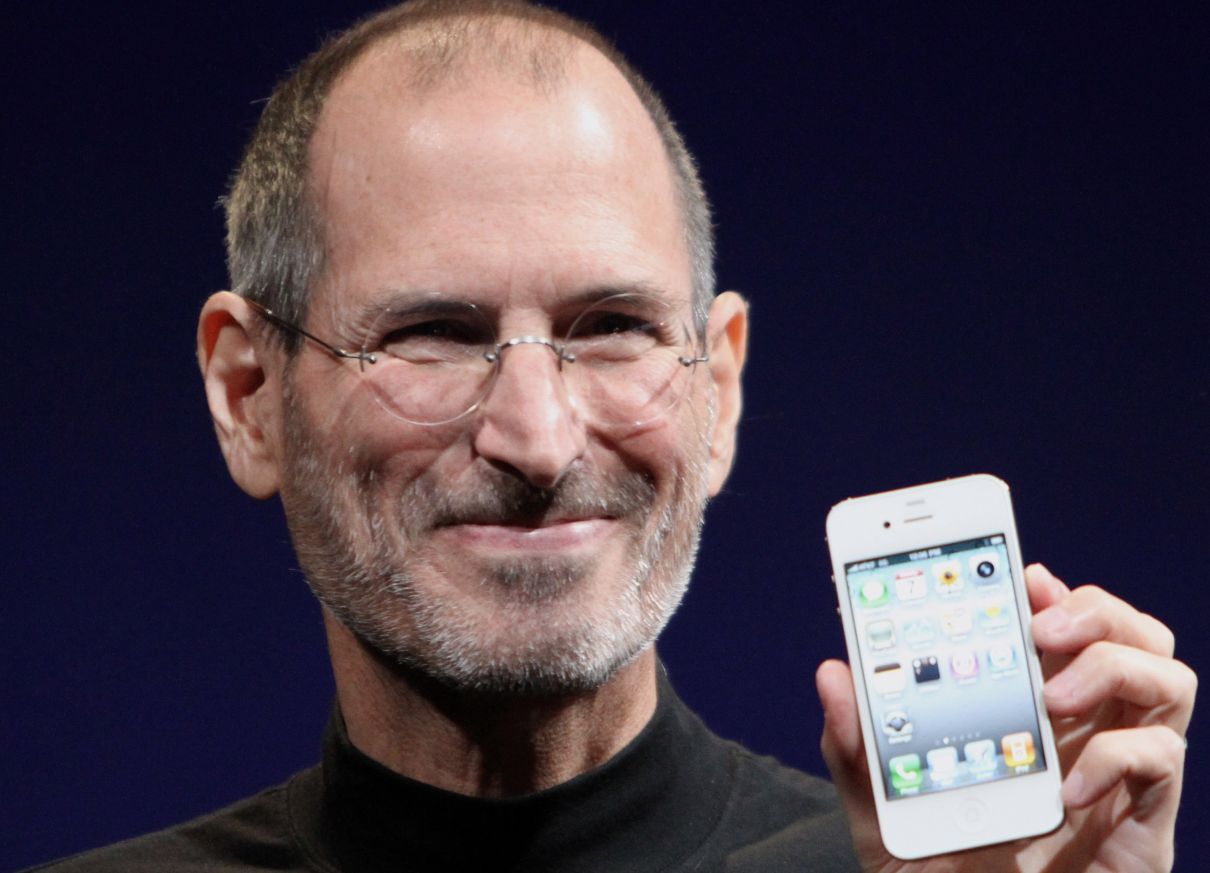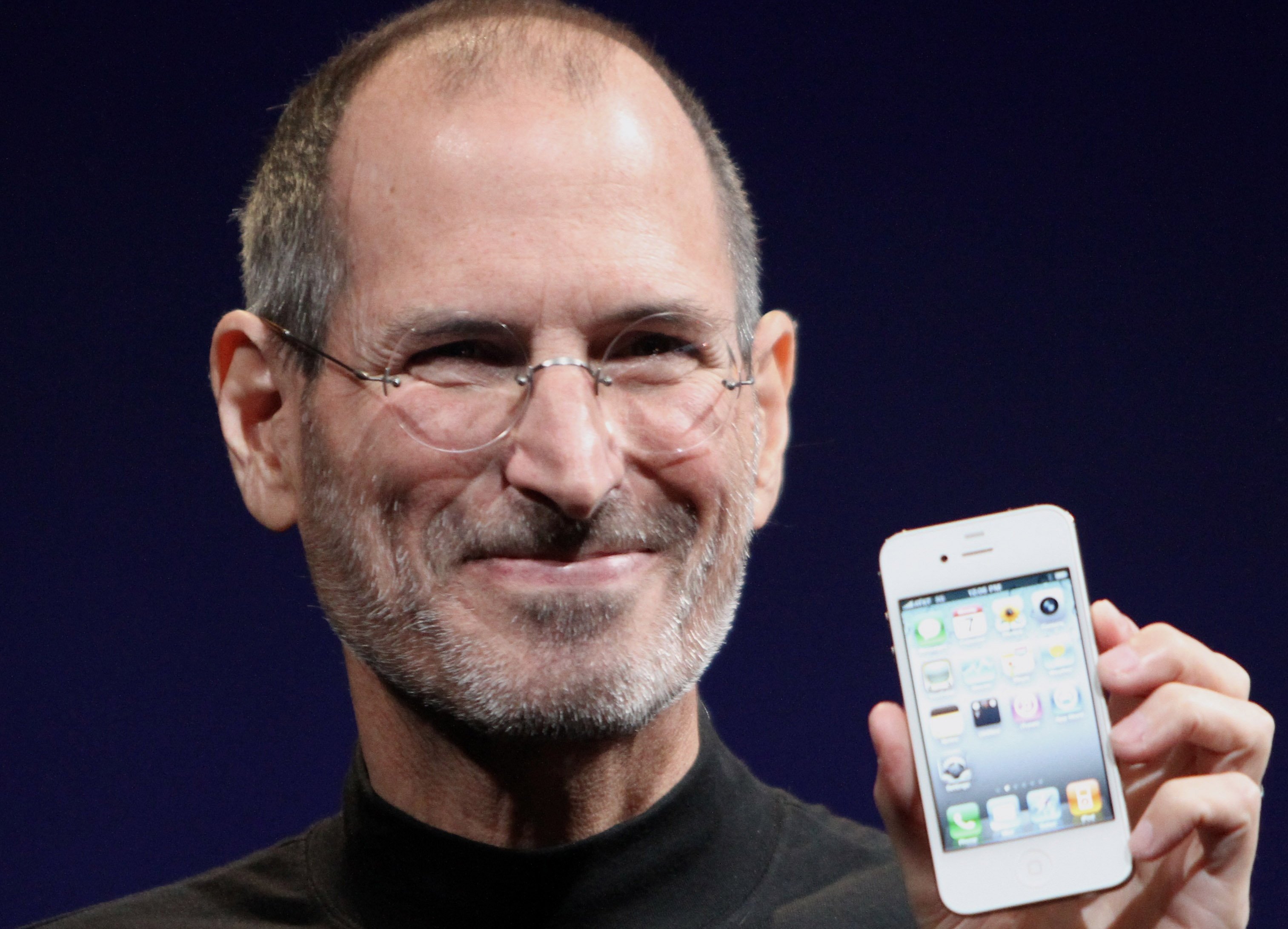Steve Jobs: A Self-Marketing Genius

Steve Jobs turned launching a product into an art form—and into a powerful instrument for self-marketing.

Hardly anyone knew Steve Jobs as well as the software engineer Andy Hertzfeld, who was a leading member of the original Apple development team. As he puts it, Steve Jobs was convinced he was special, one of the chosen ones: “He thinks there are a few people who are special—people like Einstein and Gandhi and the gurus he met in India—and he’s one of them.”
Rebel And Guru
On several occasions, Jobs stressed, “I never wanted to be a businessman, because all the businessmen I knew, I didn’t want to be like.” He saw himself primarily as an artist, a rebel and a guru. “As every day passes, the work fifty people are doing here is going to send a giant ripple through the universe”—it was with words such as these that he motivated his team of developers. He inspired his employees by instilling in them the idea that they weren’t just working for any old company, designing and producing useful products for consumers, but that they were part of a greater mission.
The founder of Microsoft, Bill Gates, ended up as one of Jobs’ fiercest rivals, although they did collaborate closely for a number of years. Gates once observed, “Steve was in ultimate 'pied piper' mode, proclaiming how the Mac will change the world and overworking people like mad, with incredible tensions and complex personal relationships.” Jobs uttered one of his most legendary sentences in 1983, when he succeeded in convincing John Sculley, president of the Pepsi-Cola division of PepsiCo, to become Apple’s new CEO. “Do you want to spend the rest of your life selling sugared water, or do you want a chance to change the world?” Jobs asked.
Making A Dent In The Universe
Another programmer and early employee remembers the words Jobs used to persuade him to join Apple, “We are inventing the future. Think about surfing the front edge of a wave. It’s really exhilarating. Now think about dog-paddling at the tail end of that wave. It wouldn’t be anywhere near as much fun. Come down here and make a dent in the universe.” These are the kinds of words you would expect to hear from a guru, not a corporate leader. In fact, “make a dent in the universe” was one of Jobs’ favorite go-to formulations. Apple employees were like members of a religious community or sect—Jobs was their guru and consumers were the followers of a vision that would change the world.
Jobs created an equally legendary moment at the launch of the new iMac in 1998. His biographer Walter Isaacson describes it as follows, “The product debut as an epochal event, climaxed by a let-there-be-light moment in which the skies part, a light shines down, the angels sing, and a chorus of the chosen faithful sings ‘Hallelujah!’”
For Jobs, the highpoint of 1984 was the launch of the Macintosh computer, which was accompanied by a striking television ad campaign. The Macintosh was not advertised as a new, attractive product, it was cast as a heroic warrior in the final battle between good (Apple and its followers) and the embodiment of evil (IBM). The ad featured a rebellious young woman on the run from the Orwellian thought police and throwing a sledgehammer at a big screen broadcasting a mind-controlling speech from Big Brother. Jobs styled his company’s new computer (and its buyers) as resistance warriors, the last line of defense standing in the way of the big evil corporation’s plan for world domination and total mind control.
During his keynote product presentation, Jobs issued the following battle cry, “It is now 1984. It appears that IBM wants it all. Apple is perceived to be the only hope to offer IBM a run for its money. Dealers, after initially welcoming IBM with open arms, now fear an IBM-dominated and -controlled future and are turning back to Apple as the only force who can ensure their future freedom. IBM wants it all, and is aiming its guns at its last obstacle to industry control, Apple. Will Big Blue dominate the entire computer industry? The entire information age? Was George Orwell right?”
Once again, this was not the kind of speech corporate leaders normally gave. This was far more the rallying cry of the leader of a revolution against a totalitarian state. Steve Jobs portrayed the competition between Apple and IBM as a struggle for “freedom” and against “mind control.” And he clearly positioned himself as the self-styled leader of the rebellion.
Apple’s PR Was All About Steve
Jobs was determined to position himself as a great designer and become famous for the design of his products. Jonathan ‘Jony’ Ive, Apple’s chief designer and one of Jobs’ closest confidants, reports that Jobs often talked about ideas that came from Ives and his team as if Jobs himself had come up with them. As Ive confesses, he kept detailed records of precisely who had come up with which idea first, and explains that “it hurts when he (Jobs) takes credit for one of my designs.”
In their biography of Jobs, Brent Schlender and Rick Tetzeli write that, “over the length of his career, he neglected to share credit for Apple’s success in the press.” Whenever journalists asked to interview other Apple employees for articles they were writing, he always turned down their requests.
Jobs didn’t want to share his fame with anyone or anything, not even his own products. Toward the end of 1982, Jobs was convinced that Time magazine was going to crown him as their Man of the Year. But it wasn’t Jobs who ended up on the cover of the magazine, it was “the Computer” that was chosen as the Machine of the Year. Jobs was devastated not to have been chosen for the Time cover: “They FedExed me the magazine, and I remember opening the package, thoroughly expecting to see my mug on the cover, and it was this computer-sculpture thing. I thought, ‘Huh?’” Jobs was so dismayed at not making the cover that he actually cried. This clearly demonstrates the difference between Jobs, to whom self-marketing was incredibly important, and Tim Cook, his successor at Apple, who once admitted, “Some people resent the fact that Steve gets credit for everything, but I’ve never given a rat’s ass about that. Frankly speaking, I’d prefer my name never be in the paper.”
A ‘Different’ Decision
When Jobs returned to Apple in 1997, the company was in a desperate situation. Michael Dell, the billionaire founder of his eponymous PC business, was asked what he would do if he were put in charge of Apple, “I’d shut it down and give the money back to shareholders.”
It says a lot about Steve Jobs that his first move as Apple’s CEO was to commission the same advertising agency that had been so successful with the 1984 ad to design a US$100 million advertising campaign. So even before he had any new, attractive products to launch, his strategy was to reaffirm his company’s brand image with a campaign that didn’t promote a specific product, but a philosophy. This ad campaign demonstrates just how strongly Jobs believed in the effectiveness of marketing and PR. The theme of the campaign was “Think Different” and every print ad featured a black and white portrait of a noteworthy historic figure—Albert Einstein, Mahatma Gandhi, John Lennon, Bob Dylan, Pablo Picasso, the Dalai Lama, Thomas Edison, Charlie Chaplin and Martin Luther King. These were Jobs’ role models, creative mavericks who had the courage to swim against the current, who both resisted and shaped the zeitgeist at the same time. Jobs referred to his own brand—and thus to himself as the guru of the Apple movement—in the same breath as great historical figures, freedom fighters and artists.
As a journalist, Brent Schlender has accompanied both Bill Gates and Steve Jobs for many years. According to Schlender, Gates was usually very amenable when it came to taking photos. Gates’ main concern seemed to be for the shoot to be over and done with as quickly as possible. When Schlender proposed an article for Fortune magazine, the most intense negotiations were not about the article, but about the photographs that would accompany it, “Steve had all kinds of advice about the pictures that would accompany an article, especially about the stylistic approach to his cover portrait. He could be more than a little vain about how he was portrayed, and always sought the upper hand in deciding not only who would do the shooting, but how the portraits would be set up.” “Throughout his life,” Schlender reports, “Steve had a keen sense of the tactical value of press coverage.” In fact, he was “more adept at managing the press than any other businessman alive.”
About the author:
Dr. Rainer Zitelmann is a historian and sociologist. He is also a world-renowned author, successful businessman and real estate investor. His most recent books, The Power of Capitalism (http://the-power-of-capitalism.com/), and Dare to be Different and Grow Rich : Secrets of self-made people who became rich and successful (http://daretobedifferentandgrowrich.com/), were released in 2019.








